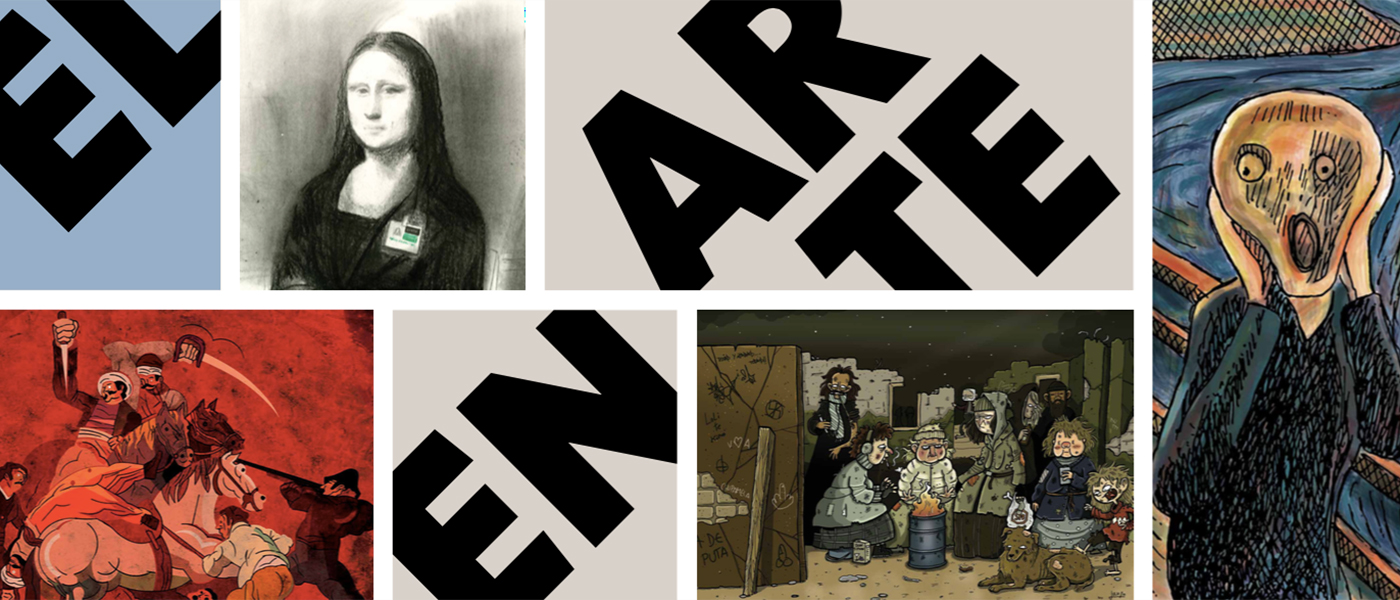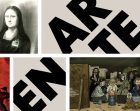
Some of the best contemporary cartoonists and illustrators show their passion for the history of painting. The exhibition presents iconic works from the history of art and from the Telefónica collection, through the eyes of a number of cartoonists.
Some of the best contemporary cartoonists and illustrators show their passion for the history of painting. The exhibition presents iconic works from the history of art and from the Telefónica collection, through the eyes of a number of cartoonists.
Art in the comic is an exhibition in which some of the best contemporary cartoonists and illustrators show their passion for the history of painting. The exhibition will present iconic works from the history of art through the eyes of a number of cartoonists, initiatives by museums based on comics, and an initiative from Fundación Telefónica to reinterpret part of its artistic collection in cartoons.
The exhibition shows work by masters of European comic such as Milo Manara, Enki Bilal, Catherine Meurisse, David Prudhomme, Bernard Yslaire, Marc-Antoine Mathieu. It also includes a broader group of Spanish artists such as Santiago García, Javier Olivares, Ana Galvañ, Mamen Moreu, Miguel Gallardo, Sergio Bleda, Paco Roca, Rubén Pellejero, Juan Díaz Canales, Enrique Ventura, Joan Boix, Fidel Martínez, Brais Rodríguez and Malagón, and many others. There will also be American artists, namelyJuan Giménez, Arthur Suydam, Jorge Zentner and Patricio Clarey.
Comic infiltrates the museum
Major art centres have become aware of the importance of comic. In 2005, Fabrice Douar, editor at the Louvre Museum, and Sébastien Gnaedig, chief editor of Futuropolis, created a collection of comics, in which the museum itself and its art collections formed the leading thread of the story. These albums were drawn and written by some of the most important names in Franco-Belgium and Japanese comics.
In 2009, this initiative resulted in the exhibition, Le Louvre invite la bande dessinée, where the leading museum in France showed the work of authors who participated in this collection. In 2012, another comic exhibition displayed the originals of the album Les Fantômes du Louvre by Enki Bilal. The artist photographed the galleries of the museum. He then sketched 22 phantasmagorical characters on top of them and imagined stories linked to the paintings they were admiring.
This inspired other museums to look into the narrative possibilities of the comic. In 2014, the Musée d’Orsay, together with the publishers Futuropolis, created its own collection of comics set in the legendary train station and its art collections. Two albums have appeared to date, drawn by Catherine Meurisse and Manuele Fior.
Comics reached Spanish museums in 2014, with the album Mitos del Pop (Pop Legends) by Miguel Ángel Martin, commissioned by the Thyssen-Bornemisza Museum of Madrid, to complement the homonymous exhibition devoted to Pop Art.
The Telefónica Collection becomes a comic
With Art in the Comic, Fundación Telefónica is joining this initiative by commissioning free versions of some of the best pieces of its artistic heritage to prestigious illustrators and cartoonists.
Javier Olivares and Santiago García, present their view of Construction in black and white “TBA” (1933) by Joaquín Torres García. Javier Olivares takes on the synthetic graphic art of the artist, converting lines into cartoons, and schematic figures into characters with their characteristic stroke halfway between cubism and expressionism.
Mamen Moreu chose a different route, substantially transforming the three images. She makes three illustrations paying tribute to the works Le peintre au travail by Pablo Picasso, Assemblage amb graffitti, by Antoni Tàpies, amd La Belle Société, by René Magritte. Juan Berrio on the the other hand, documents the period when María Blanchard painted her cubist composition (1918), and makes a one-page cartoon strip that emulates the structure of the legendary comic, 13, Rue del percebe by Francisco Ibáñez.
Other authors doing versions of paintings of the Telefónica Collection are Ana Galván, with two illustrations of Psychological Morphology, by Roberto Matta, and Nature morte cubiste, by María Blanchard; Tyto Alba with two versions of Verres, journal et bouteille de vin, by Juan Gris and L´appel, by Paul Delvaux; and Teresa Valero, with an image of La chanteuse, by Juan Gris.
Painting in comics
The exhibition also covers how masterpieces of painting appear in comics. This is a new approach to the world of painting, a personal look and a tribute to strip cartoonists, who are aware of the narrative ability of the ninth art, and use their resources to show us the world of painting in a different way to what is usually given by art critics and theorists.
This part includes works such asLa voz del pueblo, by Gustavo Rico and Jorge García who recreates La carga de los mamelucos (The Charge of the Mamelukes) by Francisco de Goya; and Espejo del alma, by Teresa Valero and Juan Díaz Canales, which includes versions of the of the main paintings of the impressionist movement.
GatoRembrandt Harmenszoon van Rijn by himself (2009) by Jacobo Fernández Serrano, includes several self-portraits of the Dutch artist, which are metamorphosed to become portraits of the feline that is the leading character of the cartoon. Santiago Valenzuela was impressed by the painting La torre de Babel by Peter Brueghel the Elder. The exhibition displays four examples of towers that feature in his graphic work. Another example is the cover of issue 100 of El Víbora, in which the main characters of the legendary magazine are portrayed as shipwreck survivors of the famous painting The raft of la medusa by Géricault.







